LAT Pictures
Click an image for a larger view
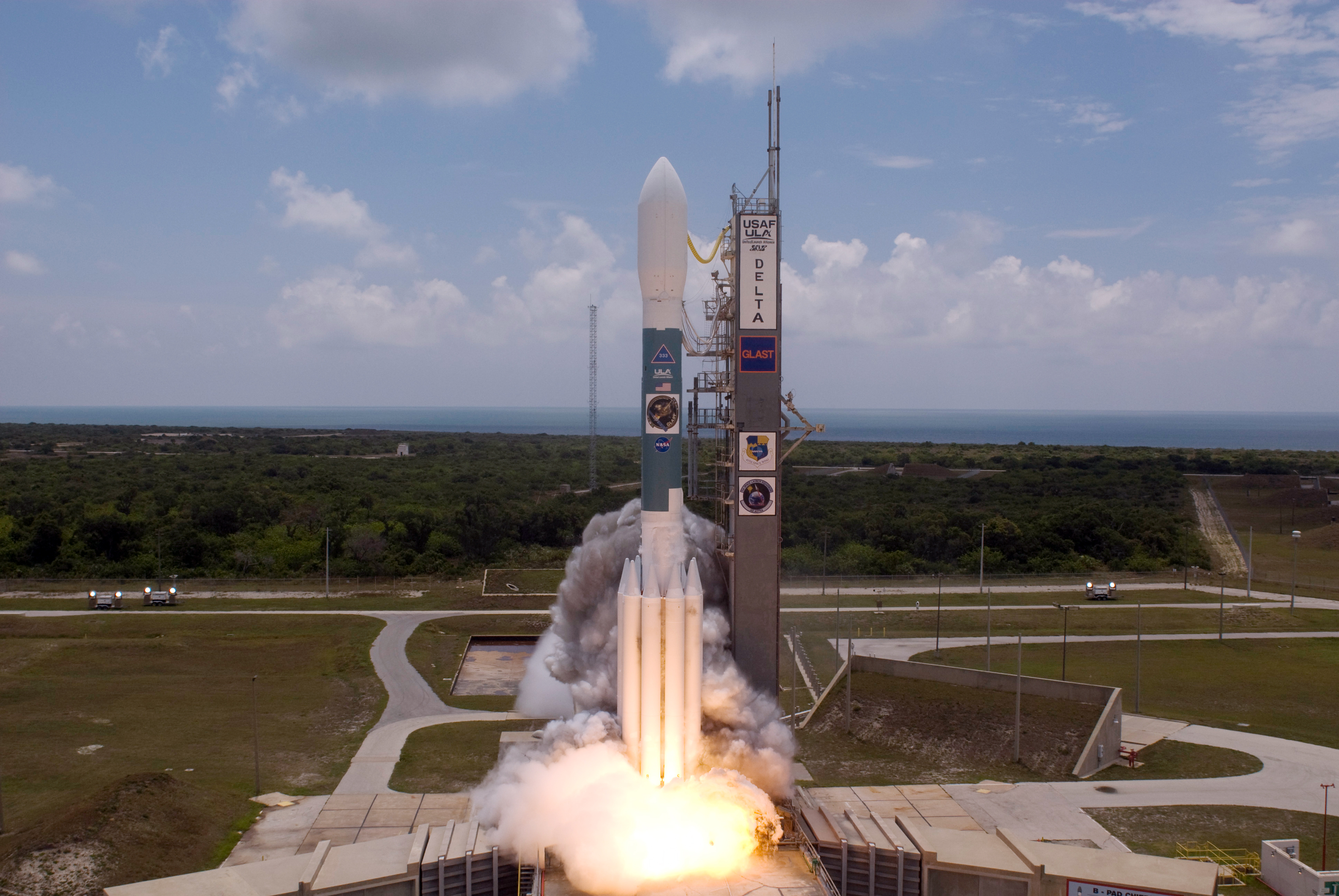
GLAST (later renamed Fermi) was launched on a Delta II rocket from Cape
Canaveral on 11 June 2008
|
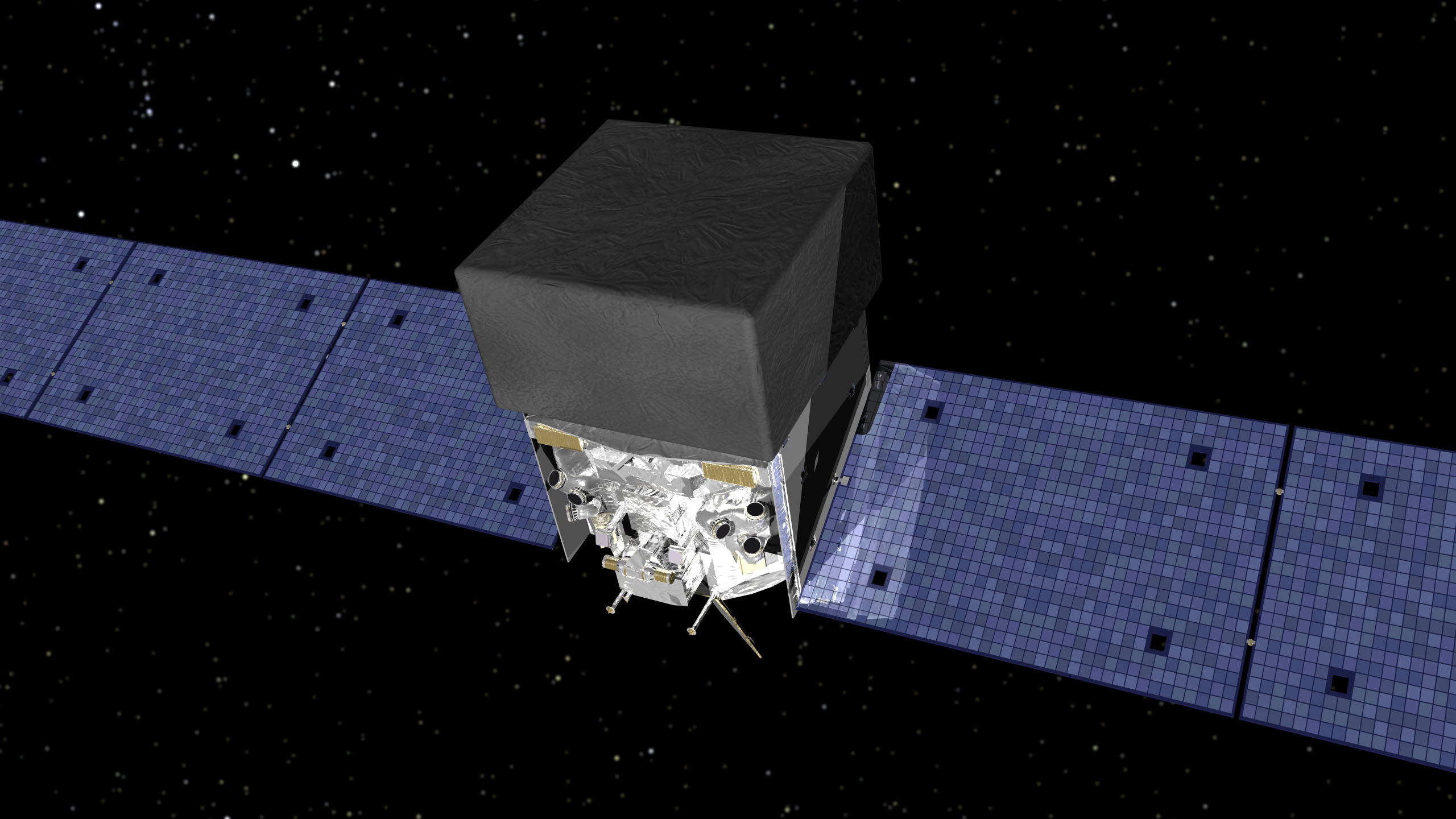
Artist's conception of Fermi in orbit. The orange box is the blanket
which protects the LAT instrument. The long wings are solar panels.
|
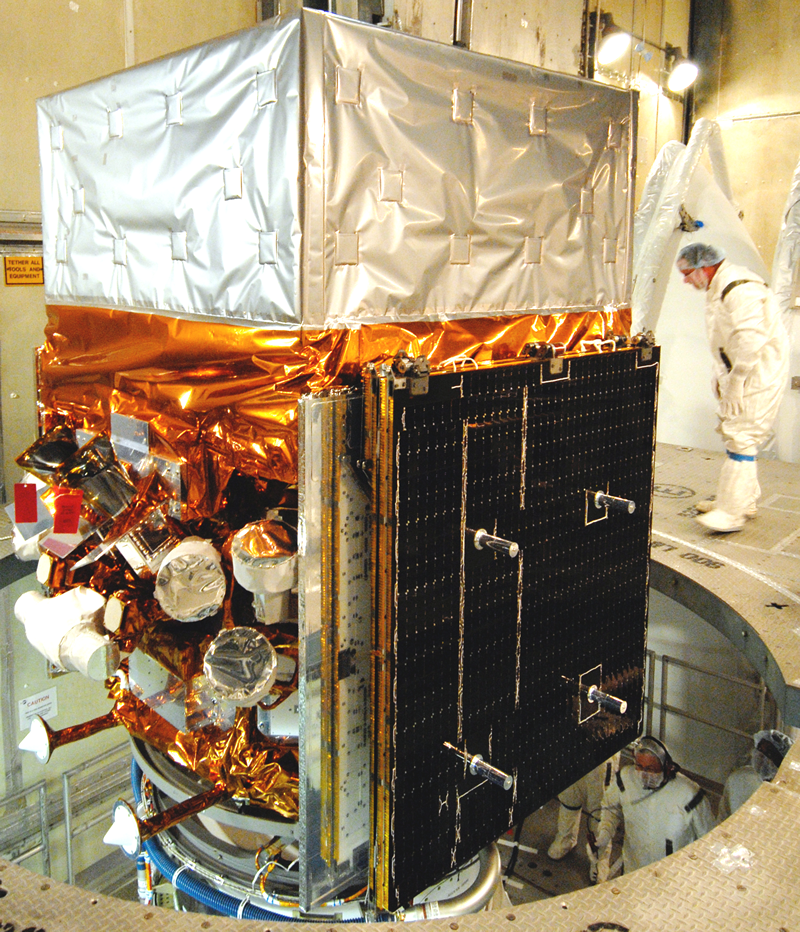
The Fermi spacecraft shortly before launch. The solar panels are folded
at the sides. The GBM detector modules and the telemetry antennas can be
seen on the left side.
|

Ten point sources were chosen to illustrate the various types of objects
that Fermi has seen. The bright band across the center is caused by
cosmic rays interacting with gas in the plane of the Milky Way. Note
the streak in the upper right quadrant caused by the Sun. This was
NASA's Astronomy Picture of the Day (APOD) for March 21, 2009.
|
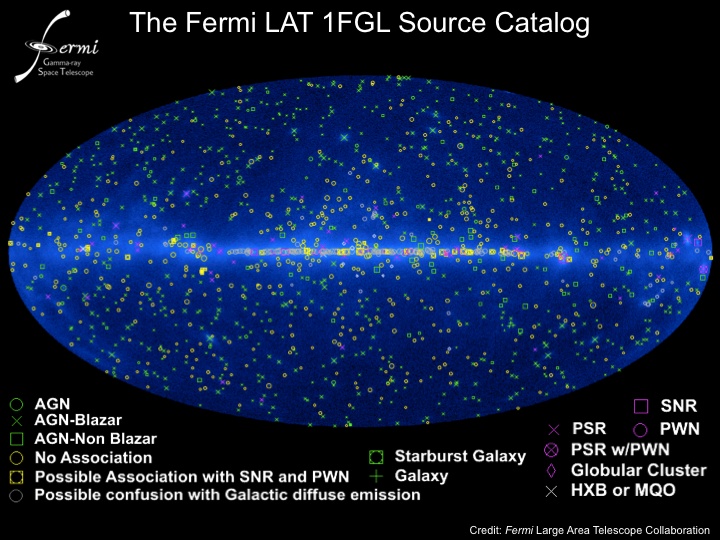
After a year in orbit, a catalog was compiled listing more than 1400
point sources of gamma rays. This image shows the types of sources and
their positions in galactic coordinates. It was NASA's Astronomy Picture
of the Day (APOD) for March 18, 2010.
|

This plot shows the positions of nine new pulsars (magenta) discovered by Fermi
and of an unusual millisecond pulsar (green) that Fermi data reveal to be the youngest
such object known. With this new batch of discoveries, Fermi has detected more than 100
pulsars in gamma rays. Credit: NASA/DOE/Fermi LAT Collaboration.
|
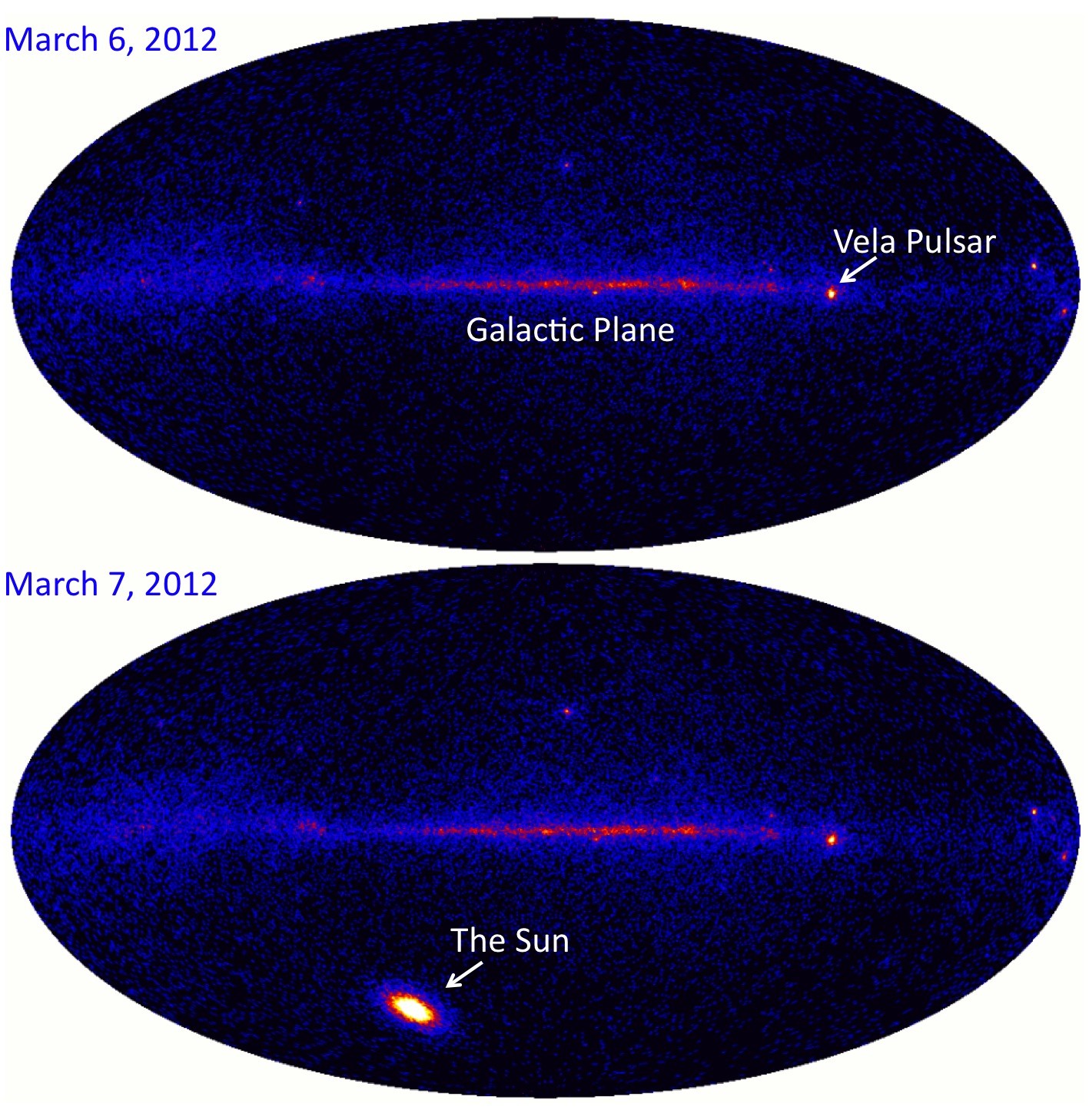
On March 7, 2012 a powerful solar flare, one of a series of recent solar eruptions,
dominated the gamma-ray sky at energies up to 1 billion times the energy of visible
light photons. These two panels illustrate the intensity of that solar flare in all-sky
images recorded by the orbiting Fermi Gamma-ray Space Telescope. It was NASA's Astronomy
Picture of the Day (APOD) for March 15, 2012.
|
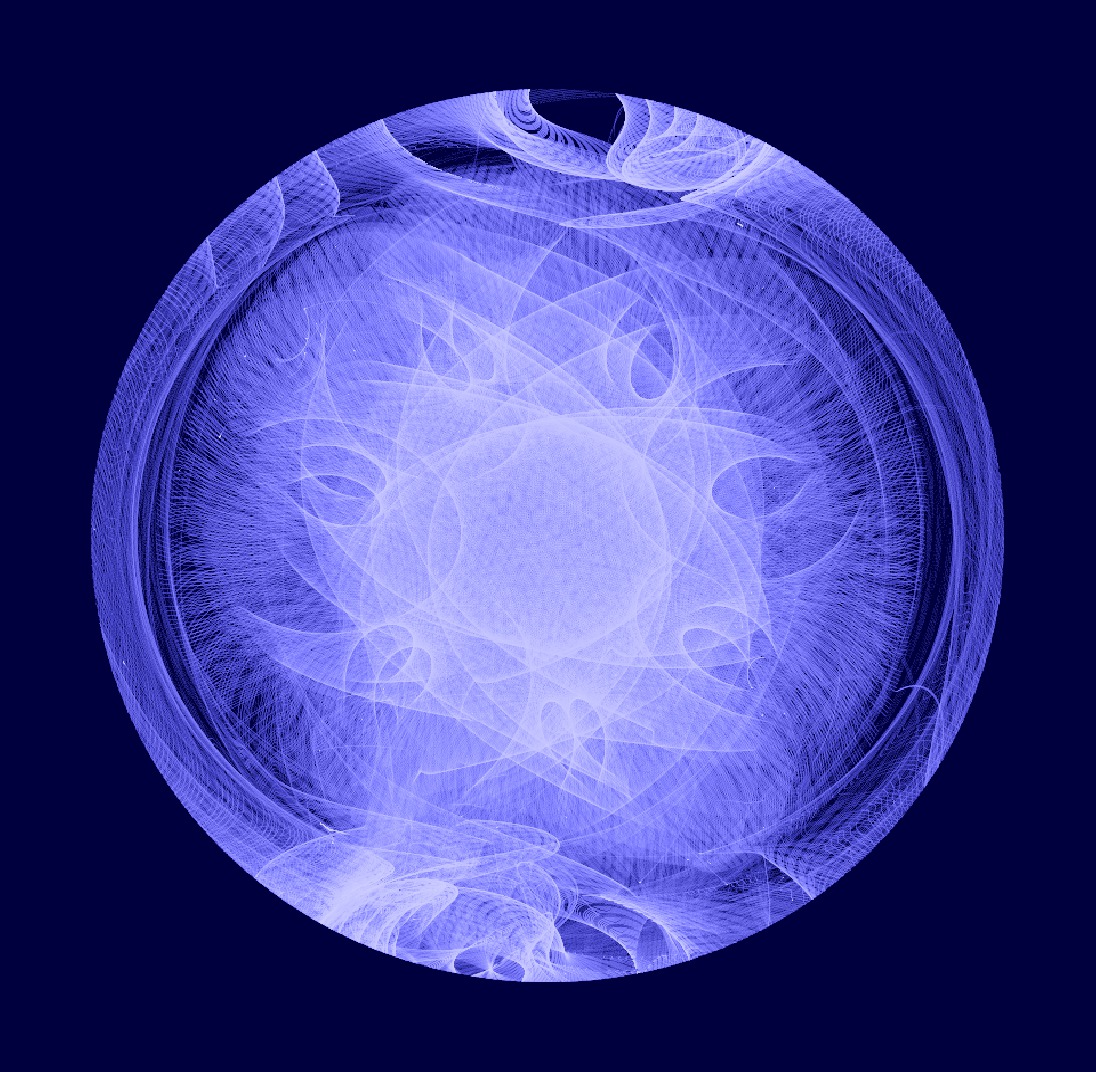
Fermi Epicycles: The Vela Pulsar's Path. Exploring the cosmos at extreme energies, the Fermi Gamma-ray Space Telescope orbits planet Earth every 95 minutes. By design, it rocks to the north and then to the south on alternate orbits in order to survey the sky with its Large Area Telescope (LAT). The spacecraft also rolls so that solar panels are kept pointed at the Sun for power, and the axis of its orbit precesses like a top, making a complete rotation once every 54 days. As a result of these multiple cycles the paths of gamma-ray sources trace out complex patterns from the spacecraft's perspective, like this mesmerising plot of the path of the Vela Pulsar. Centered on the LAT instrument's field of view, the plot spans 180 degrees and follows Vela's position from August 2008 through August 2010. The concentration near the center shows that Vela was in the sensitive region of the LAT field during much of that period. Born in the death explosion of a massive star within our Milky Way galaxy, the Vela Pulsar is a neutron star spinning 11 times a second, seen as the brightest persistent source in the gamma-ray sky. It was NASA's Astronomy Picture of the Day (APOD) for May 04, 2012.
|
See also the
Fermi Education and Public outreach picture gallery.

![]()
![]()